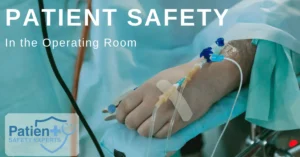The choice of central line insertion location has an outsized impact on a number of quality metrics related to central line safety. Outside of the surgical specialties, the use of the subclavian site for central line placement is rare. You can improve this at your institution with the use of an ultrasound-guided central line placement training program.
Without training, the intern on call to place the central line can’t connect their choice of insertion site location to the care and maintenance of that line by the nursing staff and subsequent increased risk of CLABSI due to dressing disruptions (1)
Knowing this limitation, design your systems of care such that the decisions of your least trained medical staff are not driving your quality outcomes.
Choosing an Insertion Site for Central Line Placement
The best central line for any patient is the one that your proceduralist safely performs, that the nursing staff can care for, and that remains in place for the shortest period possible.
If there is no system to teach and evaluate trainees on their ability to insert central venous catheters safely; you will have unwanted variability in your safety and quality metrics around central line insertion.
This study showed subclavian lines are typically better for infection and thrombosis but worse for mechanical complications.(2)
Get past those mechanical complications, and the subclavian site is a clear winner.
To help you get past those mechanical complications, check out our NEW COURSE on ultrasound-guided subclavian central line placement.
Ultrasound-Guided Subclavian Central Lines

This study showed no difference in infection between the three sites however, while the findings were not statistically significant in this study they did resemble findings seen in other studies supporting the use of the subclavian site.
This study showed greater success, fewer complications, and less time for ultrasound-guided subclavian.
This study showed arm abduction and external rotation can help to improve visualization of the subclavian vein in 70% of patients (however, 14% got worse)
The literature suggests that ultrasound-guided subclavian has a tangible benefit over the landmark approach.
Troubleshooting Arterial vs. Venous Placement of Central Lines
This study showed that adding manometry to subclavian placement eliminated arterial cannulation
Can compare blood gas of known arterial source to central line blood (in sick patients, arterial gas may look more like venous gas)
Look at the pressure waveform to see if it is arterial or venous
References:
- Timsit JF, Bouadma L, Ruckly S, Schwebel C, Garrouste-Orgeas M, Bronchard R, Calvino-Gunther S, Laupland K, Adrie C, Thuong M, Herault MC, Pease S, Arrault X, Lucet JC. Dressing disruption is a major risk factor for catheter-related infections. Crit Care Med. 2012 Jun;40(6):1707-14. doi: 10.1097/CCM.0b013e31824e0d46. PMID: 22488003.
- Parienti JJ, Mongardon N, Mégarbane B, Mira JP, Kalfon P, Gros A, Marqué S, Thuong M, Pottier V, Ramakers M, Savary B, Seguin A, Valette X, Terzi N, Sauneuf B, Cattoir V, Mermel LA, du Cheyron D; 3SITES Study Group. Intravascular Complications of Central Venous Catheterization by Insertion Site. N Engl J Med. 2015 Sep 24;373(13):1220-9. doi: 10.1056/NEJMoa1500964. PMID: 26398070.











